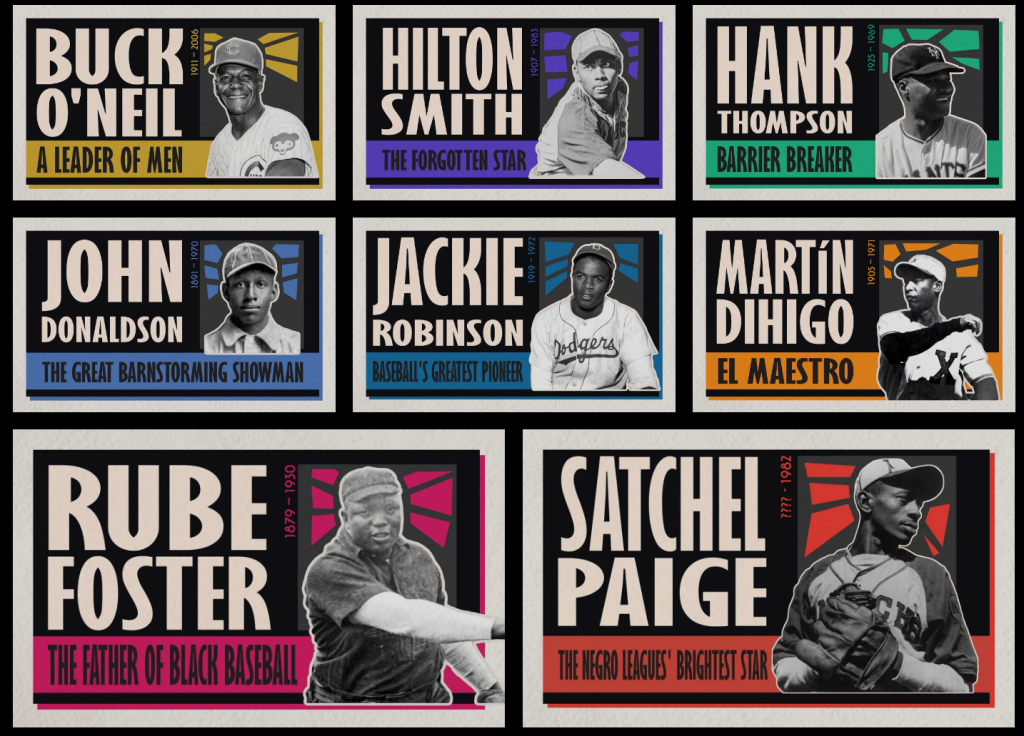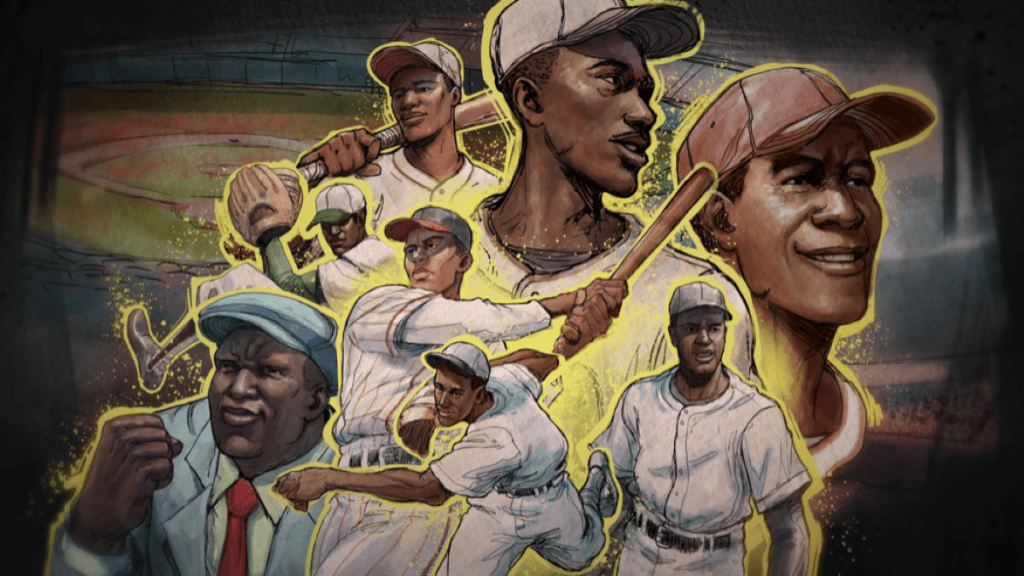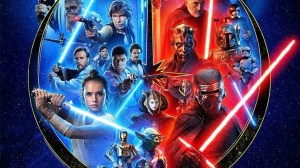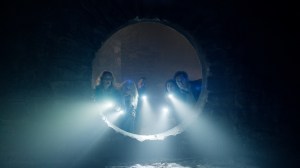After years of requests from hardcore fans, Sony and developer San Diego Studio finally announced this year that players from baseball’s dormant Negro Leagues would be present in MLB The Show 23. This new feature in the game will center around eight stars from the leagues and will look to tell their lesser-known stories to a larger audience than ever before. By most accounts, this is the biggest new feature that MLB The Show 23 will boast and will kick off an ongoing partnership between Sony and the Negro Leagues Baseball Museum that will continue to be seen in future installments.
Videos by ComicBook.com
Prior to the release of MLB The Show 23 next month, we had the chance to sit down and talk with Bob Kendrick, who is the current president of the Negro Leagues Baseball Museum. Kendrick opened up about how this crossover with Sony and PlayStation came to be in the first place, the process of choosing which group of players to highlight in MLB The Show 23, and how this partnership will help sustain the NLBM moving forward.
Origins of the Collab
ComicBook: Bob, it’s great to talk to you. I am a huge fan of MLB The Show and I’m definitely one of the fans who has been hoping to see a Negro Leagues representation like this in the series for quite some time. Can you talk to me about how this partnership came about? How long has this been in the works and what was the process like of getting this finally into the game?
Bob Kendrick: From what I understand about this whole video game process, this took place pretty quickly because it was about a year’s time that they reached out to me over at PlayStation with the idea of exploring the possibility of getting Negro League figures introduced into MLB The Show. Honestly, I think the folks over at PlayStation thought that this might be something that would take place in ’24 instead of ’23. This took on a life of its own, particularly after they came here. We had a number of meetings leading up and then eventually they came here to hang out with me at the Negro Leagues Baseball Museum. This thing just morphed and took on a life of its own and it was fast-tracked into the ’23 game.
They did a remarkable job of making this available for this edition of MLB The Show. I had to sit on this, though, for about a year. It’s hard to keep a secret that long. Everything was percolating and I’m excited about this. I couldn’t wait for the announcement because what you hoped was that others would feel the way that it seems that you felt about this announcement, and certainly, how I felt about this long overdue inclusion of the Negro Leagues because people had been asking about this in my social media family. Here it was, imminent, but I still had a little nervous energy because I wasn’t sure how well it was going to be received by the gaming community. As you saw, the reaction was just absolutely explosive. It really was. I am overwhelmed by the tremendous positive response that we have gotten to this announcement about the inclusion of the Negro Leagues in MLB The Show 23.
Reaching the Masses Through MLB The Show
CB: One of the reasons I imagine you’re most excited about this is that this is probably the most exposure that I feel like the Negro Leagues has gotten in a very, very long time in this way. The stories of these players are going to get circulated to far more people now than ever before. What was that like for you approaching this project, knowing that this is going to be a huge thing and there’s going to be a big exposure opportunity here? Did that inform how you wanted to tell these stories?
BK: When you’re able to align with a well-respected brand like Sony PlayStation, you felt like their platform alone was going to get you exposure and reach beyond anything that the museum had done in this realm, anyway. It dovetailed right off of the release of our Undeniable animated series, which we had released a week before that with Major League Baseball. It was the first time we’d ever done an animated project, the first time Major League Baseball had done an animated project, and they chose the Negro Leagues to do it. This announcement was coming right on the heels of that, and so you felt like there was some momentum that was being built because what we were attempting to do is take Negro Leagues baseball history and give it a unique, mainstream voice.
I was joking with Joe and folks over at DKC and said, “When I was playing a video game, it was Atari.” Now, all of a sudden, here we are, thrust upon this new community for this museum. We once upon a time had a venture with the game company Acclaim and Acclaim went bankrupt before we ever got to see the game come out. We never collected any royalties or got any of the games. That project didn’t work out the way that we had hoped, but to align, as I said, with a well-established, well-respected brand in Sony PlayStation and the game MLB The Show, which, again, I am still wrapping my arms around just how big MLB The Show really is. You could tell that the following for this particular game is substantial, well beyond what I think I had any comprehension on. Yeah, this movement, and I think I look at it as a movement, has been truly inspirational and exciting.
Choosing Which Stories to Tell

CB: This collab between the Negro Leagues and MLB The Show is happening through a seasonal format. You’ve got a multi-year partnership here where you’re going to continue to tell different stories throughout this year’s game and in other upcoming games. How did you choose the core class of eight players that you wanted to center around in MLB The Show 23? Was it very easy to just choose the best of the best from the Negro Leagues? Or was it a really difficult process?
BK: No, it really wasn’t. I got out of the way and allowed the folks over at PlayStation to make the selections. I was there to advise along the way, but I can understand how they wanted to implement and bring forth, because you’re right, we could have come out with just smoking guns blazing and put all of the big stars that everybody recognizes. But I think the way that we are now rolling this out, we save some fire for later. You’ve got to bring some heat later on, too, so that you can continue to build on the interest. That’s not to diminish any of the eight players that are part of this first game because they’re all big-time stars. It’s just the fact that some of them are not the household names or the transcending names I like to refer to when you start talking about the Josh Gibsons of the world, or the Cool Papa Bells of the world. Most baseball fans have heard those names. Even if they don’t know just how great they were, they’ve likely heard those names before.
But when I talk about a Martin Dihigo, and he is one of the greatest baseball players of all time, but people don’t know that name. He’s enshrined into five different countries’ baseball Halls of Fame, played all nine positions, and played all nine of them great, but no one really knows who he is — but they should. He is that opportunity to introduce one of those lesser known, but certainly not lesser skilled players from the Negro Leagues.
As part of that learning and education process as well, I adhere to the belief that no sport holds to its history the way baseball does. It’s the sport that we constantly compare the stars of the past with the stars of today. Now, the other sports it’s pretty much widely accepted if you play the game now, you’re likely better than your contemporaries were or those who preceded you, but not baseball. Whoever your favorite baseball player was when you were a kid likely going to be your favorite baseball player for the rest of your life. For me, it was Henry Aaron, and so there will never be a baseball player better than Henry Aaron. Even if they are better than Henry Aaron, I would never admit it. Now we have an opportunity to introduce some of these lesser-known figures from the Negro Leagues that people should have known, and they’re just going to get an opportunity to know them.
I oftentimes talk about why it’s so important for the museum to take on these kinds of initiatives: an animated series and the inclusion of the Negro Leagues inside a video game with MLB The Show 23. I have to connect with that younger generation. I cannot sit back and wait for them to come to me. I have got to go to them where they are, and I have to go to them in the modes and mediums in which they are accustomed to getting their information.
If it means going and generating engagement through a video game, then so be it. That’s what you have to do if we are going to continue to generate relevancy around a history of a league that has not played in over 60 years. Yeah, it’s been 60-plus years since the Negro Leagues last played a game, and yet the significance of these leagues is just as relevant and important today as ever before, but I got to help them understand how and why. That’s what we’re attempting to do, and I just feel like we are doing some cutting-edge kinds of things at the Negro Leagues Baseball Museum to generate and create and establish greater relevancy for this history.
Viewing the Negro Leagues as a Triumph

CB: I was watching some videos about the museum before we talked. In one video, you spoke about how the story of the Negro Leagues isn’t a sad story. That really stood out to me because I think a lot of people think about this league and they’re like, “This league only existed because of segregation, which means it’s a somber story.” And you clearly stressed that it shouldn’t be viewed this way. How important is it for you to highlight the positivity and joy found in the Negro Leagues when looking back on it? After all, this was a baseball league, just like any other league, and these players loved this game.
BK: It’s a huge key. I want people to understand that aspect of this because again, as I’ve oftentimes said, the circumstances that dictated a need for a Negro League, that’s sad. Segregation is a horrible chapter in this country’s history. We should have seen, from the get-go, all of the great stars taking the field and playing with and against one another. Segregation robbed us of that opportunity for those of us who are true baseball fans, but the Negro Leagues themselves… Oh, no, no, no. There’s nothing sad or sorrowful about what they did because essentially what they did was they said, “You won’t let me play with you? Then I’ll create my own.” You think about that, that is America at her absolute baseline.
While America was trying to prevent them from sharing in the joys of her so-called national pastime, it was the American spirit that allowed them to persevere and prevail. The fact that that league would then rise to rival, and in many cities across this country, surpass the league that wouldn’t let them play. “I’m going into your stadium and I’m going to put more fans in your stadium than you are putting in your stadium!” It is hard not to love a story like that, and it’s all built around the love of the game.
They just loved the game so much that they were willing to endure whatever social adversity might confront them as they were traveling the highways and byways of this country to play the game that they love so dearly. That’s really what is that triumphant spirit of the Negro Leagues, and then this immense talent. This league was filled with stars and many baseball fans missed out on seeing some of the most extraordinary talent to ever put on a baseball uniform.
Bob’s Own Experience With MLB The Show 23
CB: You mentioned before that you’re having to tap into mediums, like gaming, that are aimed more at younger audiences. So given your admitted unfamiliarity with video games, what has this been like for you to have your own voice and likeness lent to MLB The Show 23?
BK: Well, first and foremost, my cool level has risen considerably. Even in my household, my cool level has grown considerably. The fact that, for my granddaughter, her grandfather is actually in a video game, she thinks that’s the coolest thing in the world. And for me, maybe it’s helping keep old Bob a little younger at heart and in spirit as well, to be part of something as creative and innovative as this is with the inclusion of the Negro Leagues. I’ve had so many pinch-myself kinds of moments in this role here at the Negro Leagues Baseball Museum, and this is one of them.
I am proud to lend my voice to this project and to understand that for me, from a both personal and professional standpoint, this is something that is helping create a little bit of a legacy around my name and for my family as well. Just to be associated with a project like this and have my voice and likeness utilized within this project, that you hope will stand the test of time, that people will be playing for many, many years to come, and there’s old Bob as part of it. It’s pretty special. I’d be lying if I said anything otherwise.
How MLB The Show 23 Supports the NLBM Directly
CB: Is there anything else broadly about the partnership with PlayStation and MLB The Show 23 that you maybe haven’t touched on too much that you want fans to know about?
BK: Alongside all the excitement of the inclusion of the Negro Leagues in the video game itself is the fact that PlayStation is creating a custom game where a dollar from every one of those games that are played will come back and support the Negro Leagues Baseball Museum. There’s a financial aspect to this that will help support this museum and our ability to continue to create great outreach programs and grow this institution. We hope that that aspect will have great reach and that a lot of people will support this because it will come back and support the Negro Leagues Baseball Museum.
There’s a cause-related aspect that’s built into the game itself, which is tremendously beneficial. All the excitement about the Negro Leagues being in the game is great, and it is. We are over the moon excited about it, but there is a financial aspect that could help propel this museum into the future. That’s also important as we try to do everything we can to make sure that this museum is sustained so that we can continue to do these groundbreaking kinds of projects like we are with Sony and PlayStation now. So yeah, $1 from every one of the custom games will come back to support the Negro Leagues Baseball Museum.








